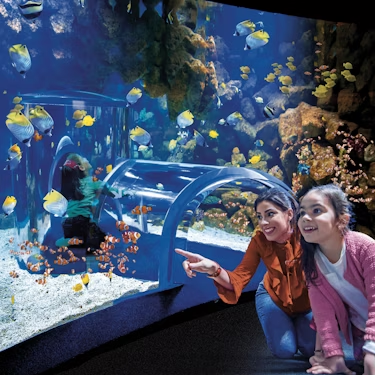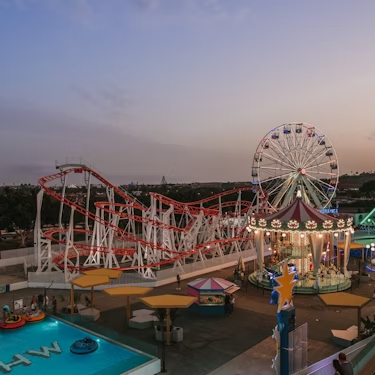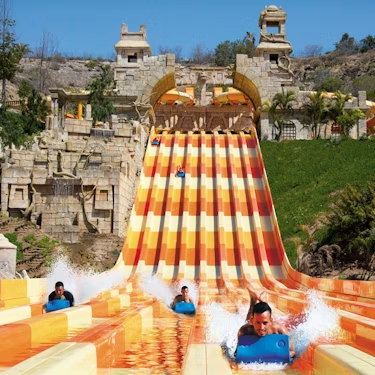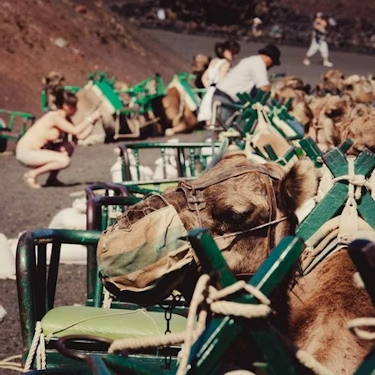More about: Gran Canaria in 3 Days: a guidebook for getting the most out of your visit
The island of Gran Canaria is the second most populated of the Canary Islands and one of the most visited in Spain, with approximately 5 million tourists a year. However, if you think that traveling to Gran Canaria, involves only visit and enjoy paradisiacal beaches, let me tell you that you are wrong. It is much, much more, as you will find an important historical, cultural and artistic heritage hidden in every corner of this fantastic island.
Among the many things to see and do in Gran Canaria, you can visit small hidden dreamy places, picturesque villages, paradisiacal beaches, beautiful landscapes, a varied gastronomy and much more. Now that you know this, if you have a few days to visit the island and you are worried about not getting to see the most important things, don't worry, I can help you. Here is a guide of things to see and do in Gran Canaria in 3 days.
Day 1: A complete tour of the historic center of Las Palmas de Gran Canaria
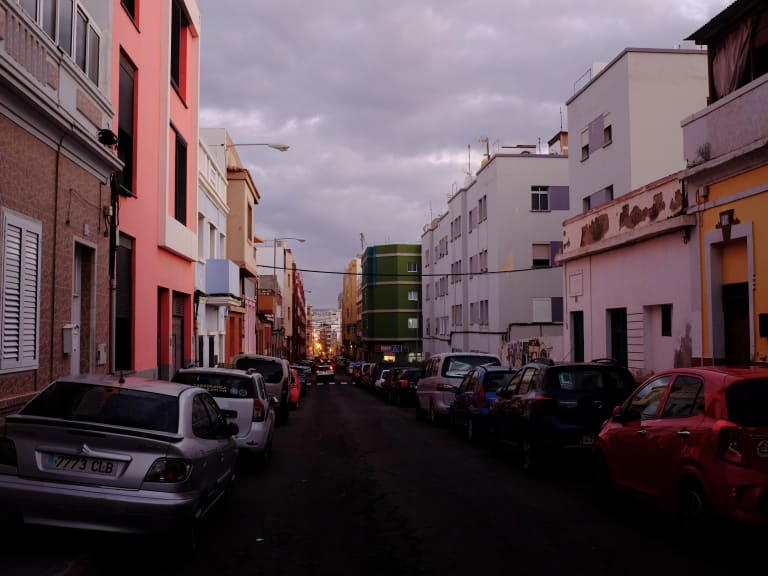
The capital of Gran Canaria is the ideal place to start your trip around the island, as there you will find its historic center and you can absorb a bit of its origins and culture. Most of the historical sites are located in the neighborhood of Vegueta, one of the most visited and known of the city of Palmas de Gran Canaria, because it is the neighborhood where at the end of the fifteenth century originated the currently most populous city of the Canary Islands.
Let me tell you in advance that there is no better way to know in depth all the essential sites of the historical center than with a guided excursion or tour of Gran Canaria. Now, let me tell you what the first day of your trip will be like.
Take a stroll through the famous Plaza San Antonio Abad and its popular Ermita (Chapel)
The first stop is a symbol of the island, since in the Plaza San Antonio Abad, which gives its name to the hermitage, were located the first civil and religious institutions of Gran Canaria. For its part, the hermitage of San Antonio Abad served in its origins as the Cathedral of the Canary Islands.
This Hermitage has become a very visited and crowded place because of the relevance it acquired as the place where Christopher Columbus prayed before leaving for America. This historical event can be seen on a plaque next to the entrance door to the chapel.
Its visit is essential on your tour of the island, as it is a place that reflects an important part of the history of Gran Canaria and its architecture is as simple as it is beautiful.
Visiting the emblematic Casa de Colón and its main spaces.
Your second stop of the day is at the Casa de Colón, an old mansion from the end of the 16th century, which was recognized as a cultural institution and is located in the historic district of Vegueta, right in front of the chapel.
It is one of the most emblematic buildings of the city, as it is there where the study, research and dissemination of the history of the Canary Islands and its relations with America is carried out.
Inside you can appreciate a Museum, a Library and a specialized Study Center, as well as other spaces where some temporary activities are carried out such as exhibitions, conferences, concerts, among others.
- Hours: you can visit it from Monday to Saturday from 10 am to 6 pm and Sundays and holidays from 10 am to 3 pm.
- Price: approximately 4 euros per person.
Enjoy the Plaza de Santa Ana and meet its eight guardians
About 5 minutes walk from the Casa de Colón, you will reach the Plaza de Santa Ana which is considered the first main square of the city, as it was built in the early sixteenth century.
Historically, government and ecclesiastical buildings have been concentrated here. Currently, the Episcopal Palace, the Provincial Historical Archive and, right in front of the Cathedral, the Town Hall are located there.
But that's not all, since something that will really catch your attention are the eight bronze dogs that remain there, which are designated guardians of the square and remain intact with the passage of time and history. Incredible!
Visit the Cathedral of Santa Ana, one of the most popular monuments.

Your first day in the Canary Islands will continue with another of the most emblematic buildings, located just a few meters from the Plaza de Santa Ana, the Cathedral Santa Ana. This sixteenth-century building is the largest on the island and inside you will find a marked Gothic style, although you will also discover corners with other architectural styles such as neoclassical and baroque.
To get inside you will first have to go through a courtyard of orange trees and climb the towers will cost about 1.5 euros per person. Let me tell you that it is well worth the climb, as from there you will have the best panoramic views of the Vegueta neighborhood.
In addition, in the Cathedral you can also visit a museum of Sacred Art to know in depth the history of the Catholic Church in the Canary Islands, for the approximate price of 3 euros.
- Opening hours: you can visit the cathedral from Monday to Friday between 10 am and 1:30 pm and on Saturdays until 4:30 pm. On the official website you can check the mass schedules in case you want to attend and live a complete experience.
- Price: free admission
Learn a little more about the history of Gran Canaria at the Museo Canario (Canarian Museum)
Just 3 blocks walking from the Cathedral, you will reach the Museo Canario, another essential site on your visit to Gran Canaria and one of my favorites.
It is a scientific and cultural society that was founded in 1879, and currently exhibits a permanent collection on the aboriginal population of Gran Canaria. In addition, one of the most remarkable sites you will find there is its documentation center, which is considered the largest and most important collection of documents on the Canary Islands.
- Hours: you can visit this museum from Monday to Friday from 10 am to 8 pm, and Saturdays, Sundays and holidays from 10 am to 2 pm.
- Price: general admission for about 5 euros per person approximately.
Visit the mythical house-museum of the writer Benito Pérez Galdós
A 10-minute walk from the Museo Canario will take you to the house-museum of Benito Pérez Galdós, a traditional 19th century house located in the Triana neighborhood, in the historic center of the city. Its name is due to the fact that the writer Benito Pérez Galdós was born and lived there during the first years of his life.
Its visit is essential to continue a journey through the history and culture of Gran Canaria, since there you will find all kinds of preserved furniture, an abundant collection of musical instruments, photographs and works of art, among other relics that were part of the writer's life and the past of the island.
- Price: admission is absolutely free and guided tours are offered every hour.
- Hours: You can visit this unique site between 10 a.m. and 6 p.m. from Wednesday to Monday, but please note that it is closed on Tuesdays.
Day 2: A tour of the north of the island that includes a route and three amazing villages

Your second day on the island will include a tour of three of the most picturesque and attractive villages on the island. There you will be able to appreciate amazing landscapes and also continue to learn a little more about the history and culture that this island has in every corner.
My recommendation to do this tour is to hire a guided day tour in Gran Canaria that includes this route to save time and money and make the most of this day.
Arucas: a small picturesque town with an interesting historical heritage
Arucas is located a little more than 10 kilometers from the capital of Gran Canaria and is a picturesque town that houses a rich historical and artistic heritage, among which stands out the Church of San Juan Bautista, better known as the Cathedral of Arucas.
This city was rebuilt after the fire that allowed the Castilians to subdue it in 1478, and only managed to obtain the denomination of city almost at the end of the 19th century. Its center is beautiful and stands out mainly for its colorful facades and houses with a marked colonial style, unique details that make it a fairytale city.
Although you will have many things to see and do there, I specifically recommend you to visit the municipal park, where Gourié's house is located, which houses the city's municipal museum.
In addition, the well-known local rum, Arehucas, got its brand name from this city and the factory, installed there since the 19th century, is open for visits. On the factory's official website you can learn more about schedules and prices.
Gáldar: a city full of history and with several beaches to enjoy
The city of Gáldar is about 27 kilometers from the capital and is connected to Arucas by the GC-2 route, about 20 kilometers away. It is known for being formerly one of the kingdoms of the island, and you can discover part of its past in the Archaeological Park of the Cueva Pintada.
The center of the city was declared a Historic Site in 1981, and houses several buildings that you have to know, such as the Templo Matriz de Santiago de Gáldar, one of the exponents of neoclassical architecture in the Canary Islands.
In addition, there you will find a wide variety of beaches to choose from, as it houses a great variety, combined with natural pools in the north of Gran Canaria. An outstanding beach is that of Sardina, where you will find several restaurants and a small fishing port, which is often chosen by diving enthusiasts.
Agaete: a perfect and harmonious blend of culture and nature
Agaete is located in the north of the island, about 30 kilometers from the capital and is connected to Gáldar by the GC-2 road, about 10 kilometers away.
This town is the perfect mix of green spaces, beautiful landscapes and cultural richness. There you can visit the Tamadaba Natural Park, home to the largest pine forest in Gran Canaria, among many other natural beauties.
In addition, the mythical Agaete Valley, and Puerto de las Nieves, which is the coastal area, and is full of restaurants that offer the best gastronomy of the place, with a picturesque and very relaxing promenade.
You will also find the Maipés Archaeological Park, declared of Cultural Interest with the category of Archaeological Zone in 1974, among many other sites.
Day 3: A tour of the most emblematic sites in the center and south of Gran Canaria
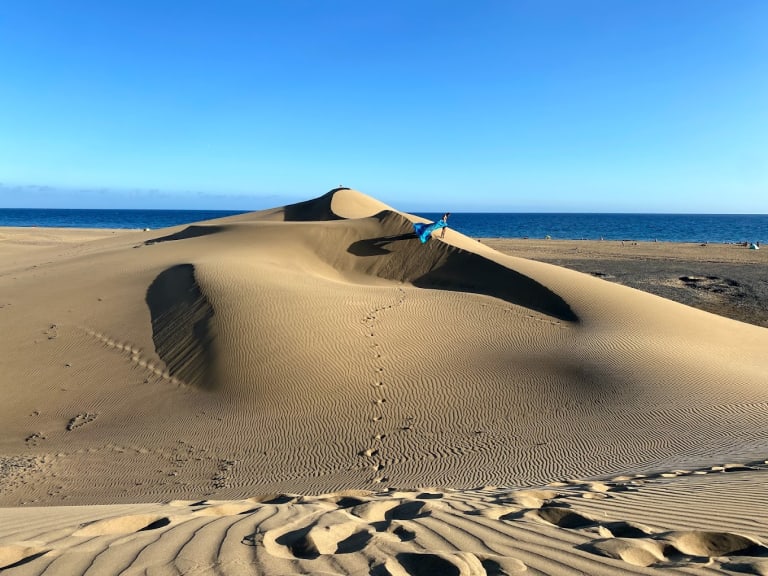
After getting to know the historic center of the capital and the picturesque villages of the north of the island, the third day will include the main sites of central and southern Gran Canaria, so that you can get to know enough and take away the best, but also have the desire to come back for more.
The day will start in one of the most popular landscapes of the island, continue through one of the main ports of the south and conclude with a camel ride through the most famous dunes of Gran Canaria.
Hiking in the Nublo Rural Park
Fans of trekking or hiking will love this emblematic place of Gran Canaria. The Nublo Rural Park is undoubtedly a must-see in Gran Canaria and one of the best things to do on the island. Even part of the territory of this park has been named on July 7, 2019 as a UNESCO World Heritage Site.
It is a protected natural area, located in the central area of the island, which is made up of rock formations similar to a monolith, which are called roques.
Roque Nublo is a volcanic rock 80 meters high that is located about 1800 meters above sea level and gives one of the best panoramic views of the island. You can go hiking, although it is also possible to go by car to the parking lot of Degollada de La Goleta and make a shorter walk of about 3 kilometers round trip. Another good option is to visit the Roque Nublo on a guided tour.
Enjoying Puerto de Mogán
Mogán is one of the prettiest towns in Gran Canaria, I would say in all of Spain, and of course, one of the must-see places on your three-day trip around the island.
It is located well to the south, and you can include it in the itinerary after Roque Nublo, although keep in mind that it is about 45 kilometers away towards the lower part of the island.
Its streets are, more than picturesque, beautiful. Mostly white, with colorful frames. There you will find a small beach with a port full of several restaurants where you can stop for a bite to eat and enjoy the best Canarian food overlooking the calm waters, with boats at anchor.
But not only that, in Mogán you can also practice some activity such as diving or snorkeling and even enjoy a boat trip, as most leave from this port and usually include meals, making it the perfect plan.
Enjoy one of Gran Canaria's favorite landscapes: The Maspalomas Dunes
One of the most famous places in Gran Canaria and where your third and last day will end, is located in the south of the island and is one of my favorites: the dunes of Maspalomas. Let me tell you in advance that in this place you can live one of the most incredible experiences.
Although any time of the day is ideal for your visit, I left it for the last, because the sunset is perfect to enjoy the dunes. The sand is warm, but no longer burns as much as during the day, the temperature perfectly accompanies the walk and the sunset dyes the landscape with a perfection worthy of admiration.
It is a protected natural area that has an area of more than 400 hectares and is composed of a landscape of numerous dunes that reach up to 10 meters high, although they vary in shape and size with the wind. It will be like being in the desert, but constantly feeling the humid air coming from the sea.
My recommendation is that you get to know these popular dunes on a guided tour, as it is the most convenient and entertaining way to do it, nothing like a camel ride through the dunes of Maspalomas!
A great option: the tourist bus of Gran Canaria
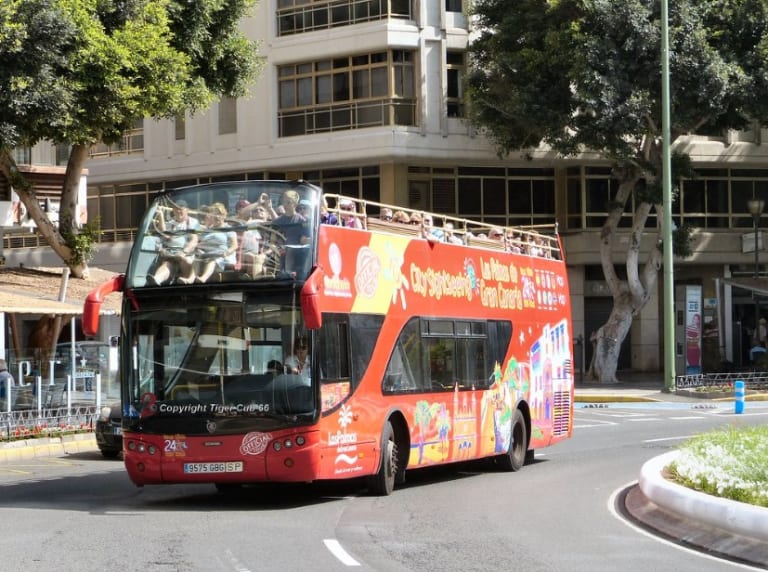
The tourist bus of Gran Canaria will be your great ally in your 3-day trip around the island, since most of the activities and attractions that I mentioned in this post are included in its route. With this bus you will have absolutely everything covered for the first day, and you will be able to tour the capital of the island without having to worry about anything, which will help you save time and money.
Best of all, this bus has free stops, so you can use it as the perfect means of transportation to move from one side to the other, without spending extra money on transportation and saving time.
My recommendation is that you make a list of the attractions you want to visit and check if they are included in the bus route so you can organize your trip in the best way and make the most of your 3 days in Gran Canaria, without having to worry about anything.

